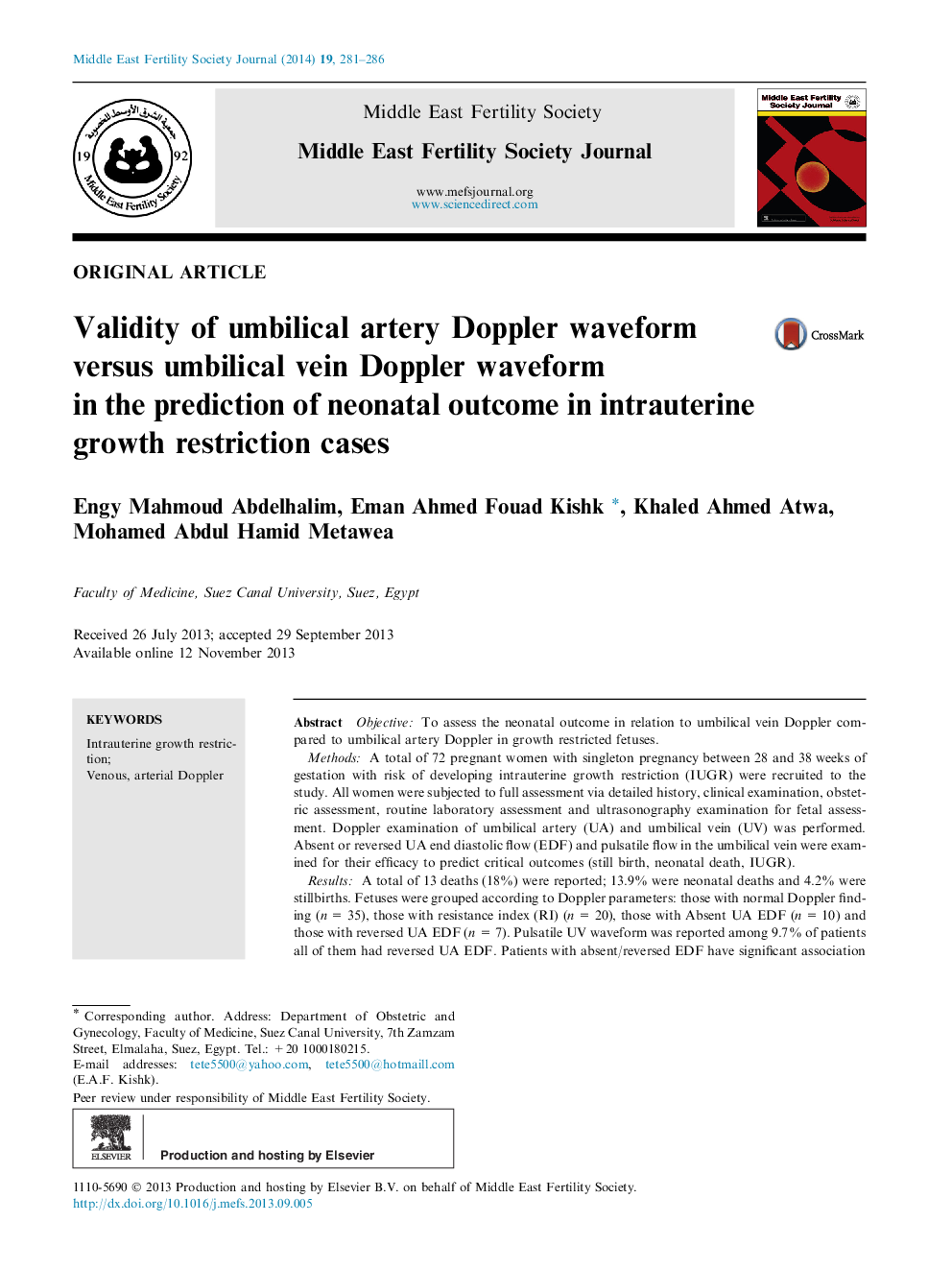| Article ID | Journal | Published Year | Pages | File Type |
|---|---|---|---|---|
| 3966117 | Middle East Fertility Society Journal | 2014 | 6 Pages |
ObjectiveTo assess the neonatal outcome in relation to umbilical vein Doppler compared to umbilical artery Doppler in growth restricted fetuses.MethodsA total of 72 pregnant women with singleton pregnancy between 28 and 38 weeks of gestation with risk of developing intrauterine growth restriction (IUGR) were recruited to the study. All women were subjected to full assessment via detailed history, clinical examination, obstetric assessment, routine laboratory assessment and ultrasonography examination for fetal assessment. Doppler examination of umbilical artery (UA) and umbilical vein (UV) was performed. Absent or reversed UA end diastolic flow (EDF) and pulsatile flow in the umbilical vein were examined for their efficacy to predict critical outcomes (still birth, neonatal death, IUGR).ResultsA total of 13 deaths (18%) were reported; 13.9% were neonatal deaths and 4.2% were stillbirths. Fetuses were grouped according to Doppler parameters: those with normal Doppler finding (n = 35), those with resistance index (RI) (n = 20), those with Absent UA EDF (n = 10) and those with reversed UA EDF (n = 7). Pulsatile UV waveform was reported among 9.7% of patients all of them had reversed UA EDF. Patients with absent/reversed EDF have significant association with critical neonatal outcomes as lower birth weight, perinatal deaths, and lower Apgar score. UV Doppler was abnormal in patients with more severe deterioration (patients with reversed UA EDF) while it was normal in all patients with increased RI and absent UA EDF. All cases with Pulsatile UV Doppler have shown higher incidence of critical neonatal outcomes.ConclusionUV Doppler assessment can aid in detection and prediction of critical perinatal outcomes however, it required further evaluation and assessment.
